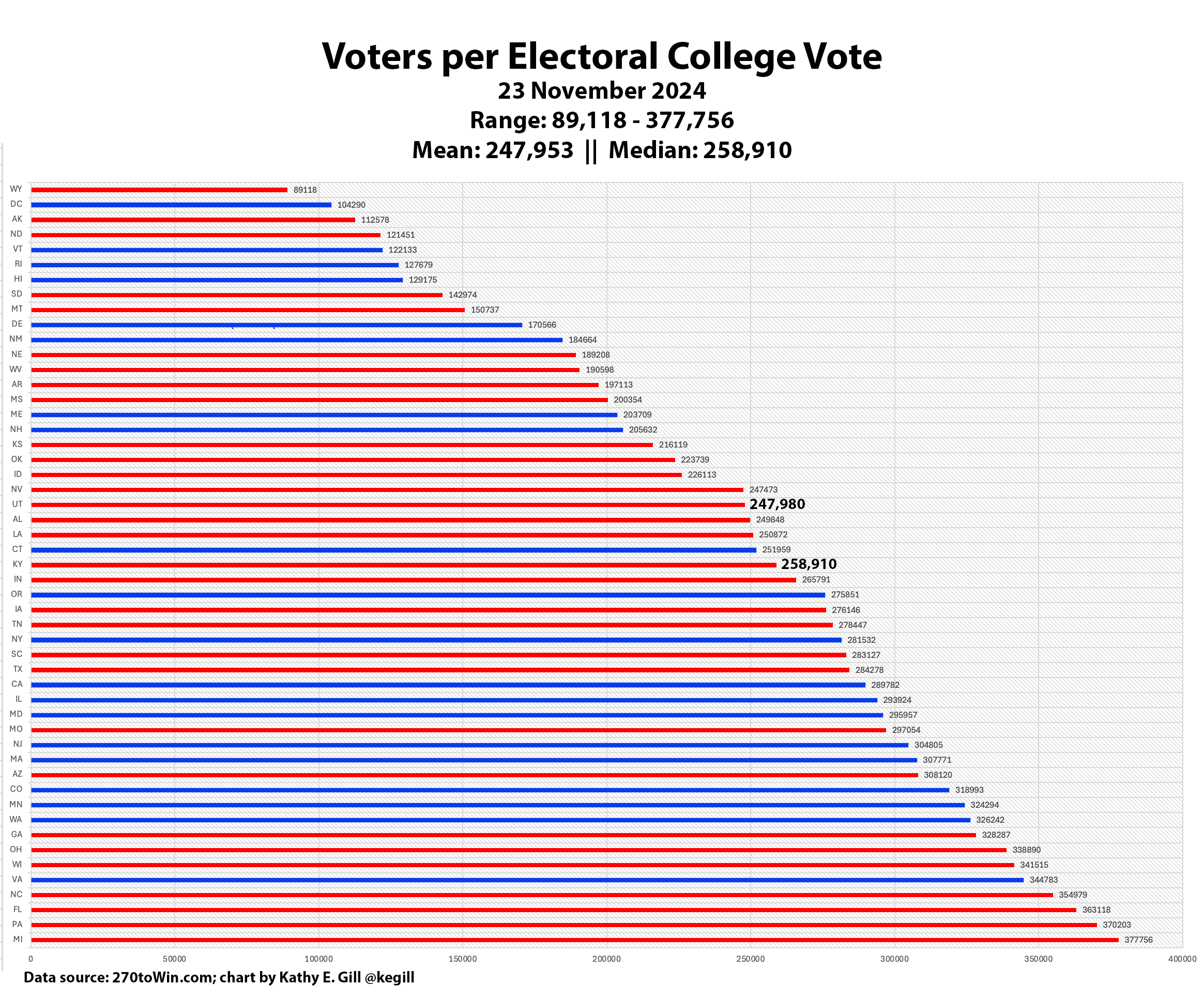Because the U.S. president is elected by the Electoral College, this year a voter in Wyoming carries four times the influence of a voter in Michigan. Voters in 25 states have about one-third to one-quarter the influence of Wyoming voters. Voters in 29 states plus the District of Columbia (DC) have less influence than voters in the other 21 states.*
The Electoral College blatantly violates one person, one vote. It is the sum of the members of the Senate (100) plus the House (435) and three votes for DC. In this election, 21 states have less than the average vote cast per Electoral College vote.
The Electoral College has always been inequitable. As a means to elect the president, it originally favored southern states: slaves were counted as 3/5 of a person for the purpose of Congressional apportionment but were not allowed to vote until the Civil War. Even now, Black Americans are disenfranchised at a greater rate than White Americans.
However, when Congress expanded the number of members of the House to accommodate a growing population, it minimized the inequity inherent in the Electoral College. In the 18th and 19th centuries, Congress usually added members with each 10-year census. In general, no state lost seats. Instead, those that gained population gained seats. This practice stopped with the Apportionment Act of 1911.
Congress then codified the number of members in the House of Representatives at 435 in 1929, when the population was about 125,000,000.
Today the US population is about 350,000,000 — or almost three times that of the frozen-in-time House of Representatives.
In order to ensure a more perfect union, Congress should at least double the number of U.S. Representatives. Such an act of Congress would require two-thirds of the Senate to agree (filibuster), which is unlikely. It would also require Presidential approval.
In answer to where might Congress convene for joint sessions, look no further than the public-private partnership that is the Kennedy Center for the Performing Arts. Capacity: 2,465. Otherwise, junior members could vote from the Gallery (which seats 500) or their Capitol offices: it is 2024, after all. Add more cameras for the public to view floor action when the gallery is full.
Alternatively, the people could, theoretically, abolish the Electoral College. It takes a vote of two-thirds of Congress and three-quarters of the states to amend the constitution.
Either measure would likely be opposed by voters in the 21 states who are overly enfranchised. So much for theory.
Certainly the proposals would be opposed by Republicans who have now won three presidential elections in 24 years without obtaining a majority of the popular vote (Bush in 2000 and both Trump victories).
Stalemate.
What are the alternatives? Civil war, which seems to be what some MAGA hangers-on are advocating. Or secession, which is beginning to be discussed publicly. (See The Nine Nations of North America.)
The United States is the only modern democracy operating with its original 18th century codified constitution. Rather than adapting to change, Congress has been frozen for more than 100 years.
There is no political will for constitutional or compositional change.
I see no path forward until conditions become so extreme that civil war is the only possible route. Please, show me the flaws in my logic.
* Divide total votes cast by the number of Electoral College votes in each state. I used data from 270toWin.com. Although the results are not final, the remaining ballots to be counted will not significantly change this math.
Known for gnawing at complex questions like a terrier with a bone. Digital evangelist, writer, teacher. Transplanted Southerner; teach newbies to ride motorcycles. @kegill (Twitter and Mastodon.social); wiredpen.com

















